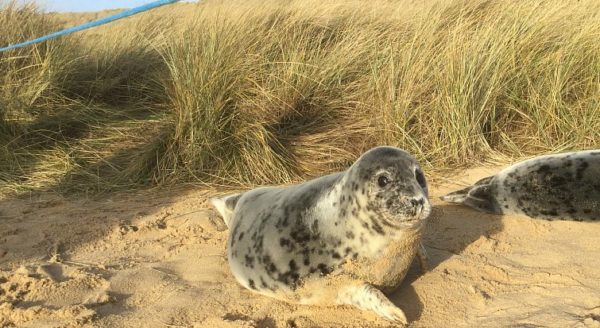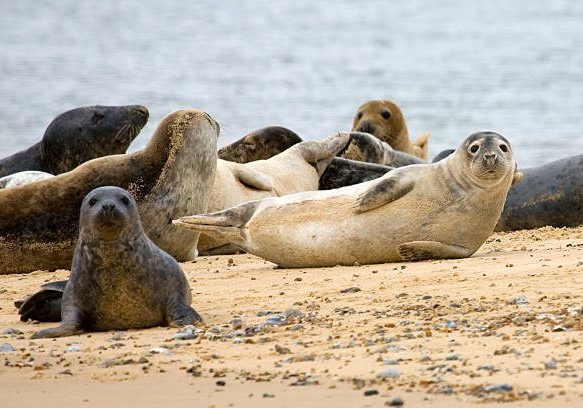‘Tis the season to see the seals
November to January is the perfect time to combine a dog walk with the opportunity to get a glimpse of grey seals in their natural habitat here in Norfolk.
That’s because it’s breeding season when the adult seals will come ashore to have their pups. One of the best spots to see both parents and pups reasonably up-close if you’re on holiday at one of our Dog Friendly Cottages, is at Horsey. Although you don’t have to be on holiday – plenty of locals love seal pup spotting too.
When there, look out for a Friends of Horsey (FoH) seal warden who can show you the best spots to see the seals without disturbing them. The beach itself will be shut but there are great viewing opportunities from the top of the dunes at Horsey Gap car park.
The car park has pay and display machines on site and sometimes even a food truck at busy times. If it’s too busy there’s another car park, just a mile away at Horsey Windpump. It’s run by the National Trust and you’ll find a café with a gift shop there.
Blakeney Point, where you can walk the three miles on loose shingle to the colony, is another good spot for seeing seals. You can leave your car at Cley car park.
Incidentally, with more than 3000 seal pups born there every year, Blakeney Point is the biggest seal colony in England. It’s also been a Nature Reserve run by the National Trust for nearly 110 years.
Dogs and seal etiquette
It is really important to keep your dogs on a short lead as you near the seals, of course, so as not to disturb mum and pup. The parents are protective so it’s not advisable for you and your dog/s to get too close – especially not to take photos. You’ll know if you get too near a seal as she’ll lift a flipper and wave to warn whoever is there that she’d appreciate some distance.
@WildlifeMag: “Please try and keep at least 50 metres away, keep any dogs on leads, and never get between a seal and its pup.”

Common and grey seals – what’s the difference?
We’re lucky enough in Norfolk to have visits from both Common and Grey seals. It’s the latter you’ll find at Blakeney Point just now; Common seals breed in the months of June and August.
The Grey seal pups are covered in white fur when first born. This falls off after three weeks and it’s at this point they stop feeding from mum and head into the sea. Before that they are NOT waterproof so cannot survive in the sea. It is vitally important that they are never chased into the sea at this stage. Common seal pups are brown and will swim within a couple of hours of birth.
Grey adult seals have speckles on their coats, longer pointed heads than Common seals and parallel nostrils. They also happen to be the larger of the two species. Common seals’ faces are rounded and they have ‘v’ shaped nostrils. You can tell a Common seal by the way it lies on land like a banana i.e. with its head and tail up.








